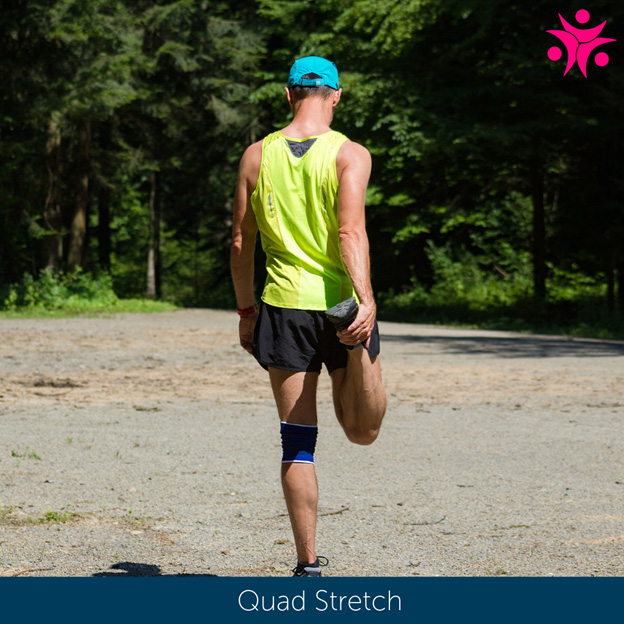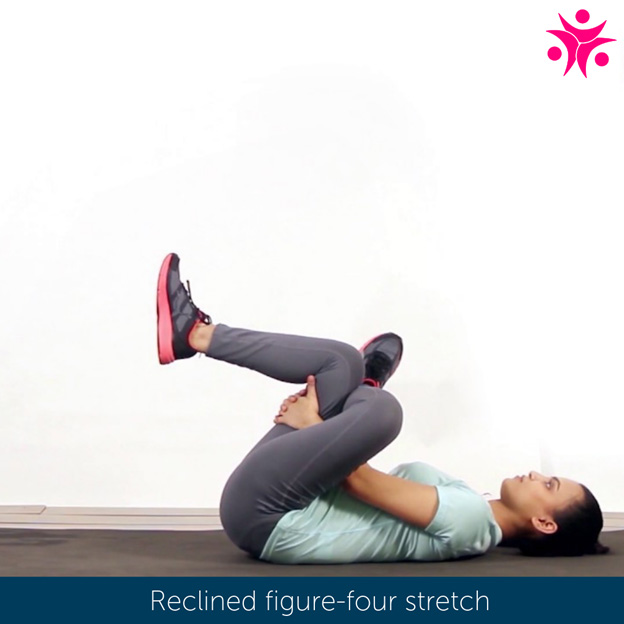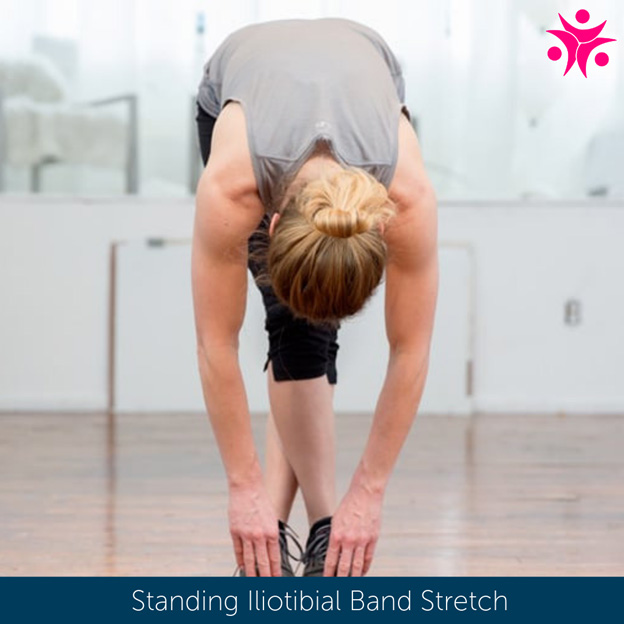
Ready for This Year's City2Surf? | 8 Last-Minute Training Tips
Thursday, August 1, 2019
City2Surf is right around the corner. Are you ready Sydney's most famous run?
Hopefully, training for the 14-km fun run has already well begun. Still, it's important to keep a few key training tips in mind as you gear up for the big race and for that epic encounter with the dreaded Heartbreak Hill.
To enhance your experience through the unique track, we've provided eight last-minute City2Surf training tips that might just give you the edge for this year's event.
Stretch Before and After
There are two types of stretching: static and dynamic. Static stretches refer to stretches that you hold while dynamic stretches refer to stretches that you move through. They both have pros and cons.
When stretching before the run, you'll want to implement dynamic stretching that simultaneously warms up your muscles. Static stretches can make you feel weaker before strenuous exercise.
Here are some must-do Dynamic stretches you should do at the start line for the City2Surf:
1. Butt Kicks

When doing butt kicks, you bring your heels up toward your buttocks. You can do this stretch at varying speeds, from a slow walk to a fast run.
As you do butt kicks, several muscles contract to bring your heel toward your buttocks. The knee flexors -- such as the hamstrings -- contract to bend the knee, and the hip extensors -- particularly the gluteus maximus -- keep your knee from lifting in front of your body.
Sets & Reps?
20 seconds But Kicks for 5 Sets. Have about 10-15 seconds recovery between each set.
2. Walking lunges

Image Reference: https://journal.crossfit.com/article/the-walking-lunge
Start standing with your feet together, and plenty of room in front of you. Put your hands on your hips or by your sides. Place your RIGHT foot forward far enough so that when you lunge down, your right thigh is parallel to the floor. You should feel a stretch through the front of your left hip. Press though your RIGHT heel and power up to bring your feet together and stand up.
Sets & Reps?
Alternate for 10 steps. Then turn around and lunge 10 steps back to where you started. Pressed for room and space? Try just doing an alternative lunge on the spot and alternate between each leg.
Try for 3 sets with 45-60 seconds of recovery between each set.
3. Leg swings

Image Reference: https://www.triathlete.com/2018/10/training/do-these-5-activation-drills-before-every-workout_336722
Stand straight with your feet being hip-width apart, Hold onto a wall or use a partner to lean on to keep your balance. If you're a semi pro try and balance on the one foot with your hands on your hips.
Keep one leg stationary and then procced to swing the opposite leg forwards and backwards in one single smooth movement. Keep your abs tight with a stable breathing pattern. With each leg swing you want to increase your range of motion. Swing the leg as high as you can with out losing your form and technique.
Sets & Reps?
For each leg we would recommend doing about 12-15 per leg. Aim between 3-4 sets. There is no need to have an extensive recovery time between alternating between each leg.
4. Side Cross Swings

Image Reference: https://www.gbpersonaltraining.com/13-hip-mobility-exercise-to-ease-lower-back-pain/
Stand with feet hip-width apart. Stand on your left leg and straighten your right leg so that is just off the ground. Begin exercise by swinging leg to the outside as far as you can and then swing back toward your body so that it crosses in front of your left leg. That completes one rep. Swing back and forth for the prescribed reps.
Sets & Reps?
For each leg we would recommend doing about 12-15 per leg. Aim between 3-4 sets. There is no need to have an extensive recovery time between alternating between each leg.
Life Saving Stretches To Do Post Race
After the race is when you'll see the most benefits of static stretching. While your body is still warm and circulation to the muscles is increased, this is an ideal time to do static stretching where you're generally holding a position for 30 seconds at a time.
Doing these series of static stretches will help increase your overall flexibility and bring much needed relief to those tight and sensitives muscles after the race.
1. Calf Stretch

Stand facing a wall and place your arms out in front of you with your hands against the wall. Place your left leg forward and bend the knee, while leaving your right leg extended straight back. Both feet should be flat on the floor. Lean toward the wall to stretch the calf muscle in your right leg
Sets & Reps?
Hold for about 15-20 seconds and then switch sides. Repeat about 4-5 times.
2. Seated Alternate Hamstring Stretch

There are plenty of variations to stretching the hamstrings but for flexibility levels and experience, we've opted for the seated alternate hamstring stretch.
Sit with one leg extended and your back straight. Bend your other leg so that the sole of your foot rests against your mid-thigh. Reach toward your ankle. Keep your knee, neck, and back straight. Feel the stretch in the back of your thigh. Stretch as far as you can without the knee of the leg your stretching coming up off the floor
Sets & Reps?
Hold for 30-45 seconds and repeat three times.
3. Quad Stretch

Stand on your left leg and bring your right heel up toward your butt. Grab your right ankle with your right hand and gently pull your foot up and in
Sets & Reps?
Hold for 30-45 seconds, switch sides and repeat three times.
4. Reclined figure-four stretch

Image Reference: https://www.youtube.com/watch?v=mQMEX_nHFR0
Bend your legs and lie down on your back. have your legs bent. so the feet are right underneath the knees. take a moment to feel the entire back body spreading on the ground feel how the chest is open the neck is easy and then place your right ankle on your left knee. keep the right foot flex slightly toes open heel.
Sets & Reps?
Hold for 30-45 seconds, switch sides and repeat three times.
5. Standing Iliotibial band stretch

Image Reference: https://www.rei.com/learn/expert-advice/trail-running-stretches.html
Commonly called “runner's knee,” a tight IT band can cause pain and tenderness along the outside of the knee after a long-distance run. This is a pretty advance stretch for beginners so don't worry if you can't nail it on your first go.
Proceed to cross your right foot over your left and fold forward at the hips to touch your toes with your fingers. While in this position, try to push your feet closer together without actually moving them. Yep it's pretty hard for first -timers with the Iliotibial band stretch. You should feel that stretch along the outside of your left leg.
Sets & Reps?
Hold for 30-45 seconds, switch sides and repeat three times.
As for the dos and don'ts of stretching, there are a few key points to remember:
- Don't force into a stretch – it shouldn't cause a sharp pain
- Don't bounce while your static stretch
- Avoid stretches that could hamper performance
For more information on static and dynamic stretching check out our blog on Static Vs Dynamic Stretching
Wear the Proper Clothing
If this will be your first City2Surf, you might be wondering what to wear to the big event. The things you'll want to pay attention to when choosing your running wardrobe are clothes, socks, and shoes.
When it comes to running clothes, this doesn't mean go out and splash cash on an entirely new wardrobe. Instead, make sure you have clothes that meet the following requirements:
- Lightweight
- Designed to move with the body
- Helps avoid chafing
- Supportive sport bras
- Compression for your muscles
Since City2Surf happens in the winter, it's also important to choose running clothes that keep you dry and warm but not feeling like you're inside a oven. You might also be interested in pockets, thumb holes, and sun protection.
It's also important to choose runner-specific socks. You'll most likely choose high socks for the cold weather but it's really up to you what's most comfortable.
For some of the best running socks currently on the market, keepinspringme.com have come up with their 10 best athletic socks for big running events like the City2Surf. Find out HERE
Finally, you will need to be sporting some quality running shoes. These shoes should fit properly and be slightly worn in. A few aspects of a running shoe to look at and cosider are:
- How cushioned and lightweight they are
- If they include a reflective surface to reflect sunlight
- What kind of tread you'll need
- Is there enough toe width?
- Plenty of toe length.
- Running technique. Depending on how you run different types of shoes would need to be considered. A physiotherapist would be able to provide valuable insight through a biomechanical analysis
For City2Surf, you won't need too much tread in your shoes. You won't be running through the bush but it is an outdoor run, so make sure your shoes are up to the challenge.
Though we don't recommend breaking or trying on new shoes so close to the race for future reference and running events runningshoesguru.com have created a guide on the best marathon running shoes for all types of running events and feet. Find out HERE

Get Your Nutrition on Point
Certain foods are best to eat before a run for energy and after a run for recovery. As you head into City2Surf, here are some ideas for your pre- and post-nutrition.
Beforehand, you'll want plenty of healthy carbohydrates but it's important not to go into a run on a full stomach.
While you are at rest, your body will have adequate time and energy to absorb and store those nutrients you ate, and then you'll be able to rely on this fuel for the following day. The same goes for the day before your planned long runs. And don't forget to eat a carb-rich, low-fiber, easy-to-digest, familiar breakfast the morning of the race!
According to Sports Dietitians Australia “The main factors causing fatigue during competition are fuel (carbohydrate) depletion and dehydration. Storage of adequate muscle fuel (glycogen) is required to ensure runners can complete their events at desired intensity.”
They also further added that “carbohydrate loading over the 24-48 hours before the event can help to increase glycogen stores, improving fuel availability during the event. Consuming low fibre foods, reducing high protein or high fat foods and using compact liquid carbohydrate foods over the last 12-24 hours before the event can help to reduce the risk of stomach upset during the race.”
Pre-City2Surf Food & Nutrition Ideas:
- Porridge (oats) with milk and fruit
- Apple or banana with nut butter
- Peanut butter and jam toast
- Greek yogurt with berries
- Smoothie
- Muesli bars
- Rice and beans with a whole grain wrap
After the rest, you'll want to replenish your body with a carbohydrate/protein combo. The Sports Dietitians Australia recommend “High-intensity training sessions, races or long runs like the City2Surf deplete glycogen stores so consuming a carbohydrate-rich meal/snack soon after finishing will help to maximise recovery. In addition, the recovery meal or snack should include ~20-25g of high quality protein to aid with muscle repair. Including healthy fats will also help to reduce inflammation. Fluids (predominantly water) should also be included to rehydrate and replace sweat losses. Nutrient-rich wholefood choices should be prioritised and athletes with a low energy budget should aim to time their training sessions around meal times so that they can use main meals to promote recovery after training.
Post-City2Surf Food Ideas:
- Fruit Smoothie
- Greek yogurt with berries
- Vegetables and hummus
- Porridge (oats) with banana
- Fruit and almonds
- Healthy protein bar
- Tuna, avocado and salad sandwich
- Poached eggs on toast
Hydrate
Of course, you'll want to hydrate on the day of City2Surf but to be properly hydrated for the race, you'll have to take some steps before the big day.
Runners should aim to drink enough fluid each day to replace losses. Fluid needs are influenced by factors that drive fluid losses such as temperature, sweat rate, exercise intensity, duration and altitude. It is not necessary or practical to replace all fluid losses during a session/race, but rather aim to replace ~150% of the fluid volume lost over the ~4-6 hours following the session.
As you're training for City2Surf, here are some tips to stay hydrated:
- Drink plenty of water throughout the day in the weeks leading up to the run
- Avoid salt
- Consume electrolytes but avoid sugary sports drinks
- Make sure you're getting enough magnesium and potassium
- Listen to your body. You'll know if you're hydrated or not. Signs and symptoms of dehydration include increased thirst, dry mouth, decreased urine output, urine is low volume and more yellowish than normal, dry skin and dizziness.

Running Tips
When it comes to the actual running, City2Surf training is about two things: a training plan and making sure your mindset is in check.
Your training plan for City2Surf should consider distance, frequency, time, and intensity.
Start with a distance you're able to run, even if that's only 1 km. Gradually, build up that distance by 5% every week until you reach the 14-km goal.
Then, you'll have to get on a schedule where your frequency allows for rest and recovery. Generally, you should have 1 to 3 rest days in between training.
As for time, interval training seems to work best and since Heartbreak Hill features a 2-km incline, it's good to prepare your body for the changes in pace.
Finally, as City2Surf approaches, you'll want to increase the intensity of your training.
On the day of the run, your mindset will get you through. Our bodies tend to be able to continue further than our brains think they can. Of course, listening to your body is incredibly important, but with the end goal in mind, you might be surprised at how amazing your body is and what your body's perceived limitations are.
Timing Your Rest and Recovery Leading Up To The Race
As briefly mentioned above, rest and recovery are extremely important aspects of a training plan for City2Surf. But, rest days don't have to mean being a blob on the lounge all day.
Sure, you should take a day off of all activity perhaps one day a week but on your other recovery days, there are a few other ways to take it easy during an intense training plan.
- Reduce the intensity (slower runs)
- Reduce the load (bodyweight training)
- Reduce the time (shorter runs)
- Change the type (do a different type of exercise)
Yoga for runners is a great way to rest and recover and many runners see amazing benefits from a yoga practice. Poses like downward dog, pigeon, and reclined spinal twist are just some examples what runners find helpful in yoga.
Yoga can also prevent injuries as well. Find out why more and more professional athletes are incorporating yoga to reduce injuries, improve their sports performance and create longevity in their careers. Check out our blog on how yoga is preventing sporting injuries.
For help with your City2Surf training plan, we have team of Mobile Physiotherapists & Exercise Physiologists who work with runners from pre-run stretches to injury prevention and extended therapy across Sydney. Give us a call today to book an appointment or find your local Physio Inq Mobile service.
Best of luck for this year's City2Surf!
